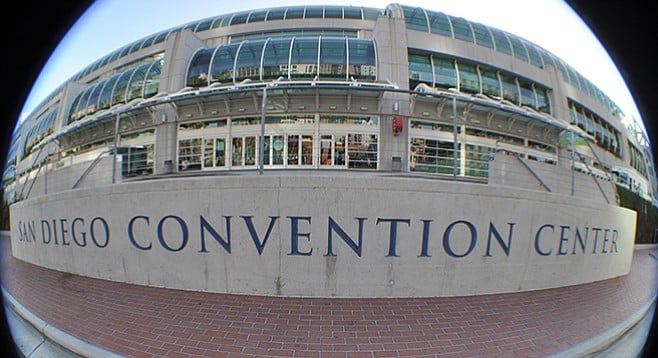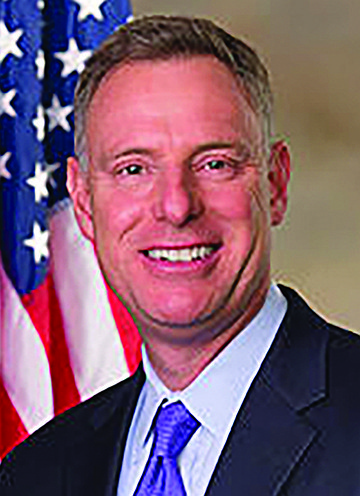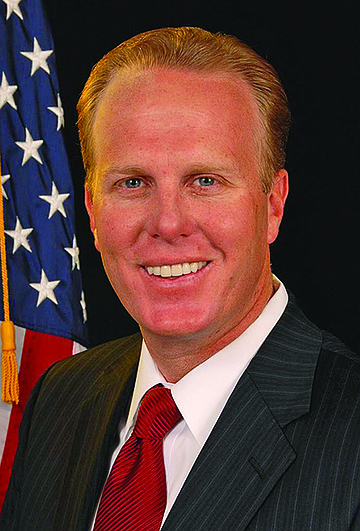 Facebook
Facebook
 X
X
 Instagram
Instagram
 TikTok
TikTok
 Youtube
Youtube

The push for an expansion of the Convention Center is said to be a “citizens’ initiative.” It is actually a government initiative drawn up to feed money to downtown plutocrats — the hotel industry. The word “citizens” is used to suggest that this public push was initiated by the citizenry. Thus, it would need to garner only half the vote to win. But since this is an initiative launched by government on behalf of the plutocracy, it actually needs two-thirds to win.

The only segment of San Diego society that will benefit from this ill-conceived proposal is the hotel industry. It puts few bucks in and pulls many taxpayers’ bucks out — classic corporate welfare.
The campaign is called “Yes! for a better San Diego.” Oh? A large number of the beneficiary hotels are based out of town. Too much money would flow elsewhere.

Expansion pushers had trouble getting enough signatures to put a bond issue to pay for the expansion on the ballot. A vote is now planned for 2018 or 2019, depending on the local economy, competition from other bond issues, possible legal snarls, and other factors.

As usual, the city’s leaders are expected to line up behind the push. According to the buzz, Congressman Scott Peters wants to leave Washington, D.C., and become mayor in 2020. He is expected to favor the expansion. Councilwoman Barbara Bry may run for mayor, says the buzz. She may favor the expansion but has a mind of her own. If Councilmember David Alvarez takes a crack at the job, he will probably oppose the expansion, as he has in the past.

The current mayor, termed-out Kevin Faulconer, has long championed an expansion, among a number of issues that he has fought for and lost. He desperately needs a win to bolster his chances in a run for Congress in Peters’s 52nd district.

The unions (construction, hospitality, etc.) will favor an expansion along with the downtown oligarchs. That juggernaut of unions side by side with business — both lining politicians’ pockets — is the main reason that publicly subsidized buildings continue to sprout downtown while the infrastructure rots throughout the city and county.

After years of legal wrangling, the city and port in June bought out Fifth Avenue Landing, a group that controlled the property contiguous to the center and wanted to build a hotel there. Fifth Avenue, led by local businessmen Ray Carpenter and Art Engel, will get $33.2 million for the five-acre parcel on the waterfront, with certain rights if an initiative fails. That’s up from $14 million in 2015, and skeptics suggest Carpenter and Engel snookered San Diego.

However, retired University of California San Diego political science professor Steve Erie, now doing full-time consulting, says the city wasn’t taken to the cleaners. Carpenter and Engel, who had gone to court over the matter, “hired people to do the [economic impact report], architecture. They got all the approvals, got independent third-party evaluations. They were close to getting the environmental impact certification on the hotel,” says Erie. Fifth Avenue expected a solid future revenue stream from the hotel, says Erie, who was a consultant for Fifth Avenue. Erie’s defense of Fifth Avenue may not convince the skeptics, who have seen the city fleeced before when trying to push a project desired by the overlords.
The campaign’s backers want the transit occupancy (hotel) tax, now at 12.5 percent, boosted by anywhere from 1.25 to 3.25 percent, depending on hotel location. Of the $6.4 billion estimated to be collected over the 42-year lifetime of the tax increase, $2 billion would go for the homeless and $600 million for road repair. The irony is that San Diego needs to spend heavily for the homeless and infrastructure, not center expansion. And the business community would gain from such improvements.
“People don’t want to vote for bond issues except for school bonds,” says Erie. One political insider says it would take only $70,000 to knock down any bond issue requiring a two-thirds vote.
That’s particularly true if that issue is to raise money for a convention center expansion, which would produce barrels of red ink. According to the center’s latest annual report, 2017 was a banner year. Occupancy was 76 percent, compared with the national average of 50 percent. But that same report shows that long-term debt soared 201,819 percent as the result of a loan from the California Infrastructure and Economic Development Bank to make needed repairs, such as at the Sails Pavilion. The interest rate on that loan is 3.6 percent.
“It is unclear whether there will be sufficient funding in the [fiscal year] 2019 budget to undertake the $7.9 million of capital and [operations and maintenance] projects called for in [fiscal year] 2019,” wrote Andrea Tevlin, independent budget analyst, in her report of May 3. “It may be… difficult for [the Convention Center] to meet all of its fiscal needs,” she said, because of such factors as possible declining revenues and rising expenditures, lower payments from the city, and service on that debt. “Going forward, it is unlikely that the Convention Center will be able to grow events/attendance and revenues enough to meet its reserve goal and also cover all of its capital, [operations and maintenance], and debt service expenses,” although an expanded center could help with meeting capital needs.
But is there any certainty that an expanded center would attract that much new business? No. In the year 2000, the total number of attendees at United States convention centers was 31.8 million. By 2017, that number had only grown to 34.1 million. But in that period, convention center space rose 37 percent, as Heywood Sanders, the national expert on convention centers, points out. There is such a supply/demand imbalance that centers are slashing prices by 50 percent, and some are actually paying groups to hold a convention there. Centers cut prices with a gimmick called “rent credits,” or, more euphemistically, “negotiating incentives.” San Diego is expected to chalk up $6.8 million of such credits in 2019. Rental income excluding those credits should be only $9.5 million. Revenues minus expenses are expected to be a negative $6.7 million for the San Diego center in 2020, according to the center’s forecast. Major cities up and down the West Coast, along with Las Vegas, are planning to expand, or have expanded, their centers. San Diego’s claim that it can overcome the glut “is seriously open to question,” says Sanders.


The push for an expansion of the Convention Center is said to be a “citizens’ initiative.” It is actually a government initiative drawn up to feed money to downtown plutocrats — the hotel industry. The word “citizens” is used to suggest that this public push was initiated by the citizenry. Thus, it would need to garner only half the vote to win. But since this is an initiative launched by government on behalf of the plutocracy, it actually needs two-thirds to win.

The only segment of San Diego society that will benefit from this ill-conceived proposal is the hotel industry. It puts few bucks in and pulls many taxpayers’ bucks out — classic corporate welfare.
The campaign is called “Yes! for a better San Diego.” Oh? A large number of the beneficiary hotels are based out of town. Too much money would flow elsewhere.

Expansion pushers had trouble getting enough signatures to put a bond issue to pay for the expansion on the ballot. A vote is now planned for 2018 or 2019, depending on the local economy, competition from other bond issues, possible legal snarls, and other factors.

As usual, the city’s leaders are expected to line up behind the push. According to the buzz, Congressman Scott Peters wants to leave Washington, D.C., and become mayor in 2020. He is expected to favor the expansion. Councilwoman Barbara Bry may run for mayor, says the buzz. She may favor the expansion but has a mind of her own. If Councilmember David Alvarez takes a crack at the job, he will probably oppose the expansion, as he has in the past.

The current mayor, termed-out Kevin Faulconer, has long championed an expansion, among a number of issues that he has fought for and lost. He desperately needs a win to bolster his chances in a run for Congress in Peters’s 52nd district.

The unions (construction, hospitality, etc.) will favor an expansion along with the downtown oligarchs. That juggernaut of unions side by side with business — both lining politicians’ pockets — is the main reason that publicly subsidized buildings continue to sprout downtown while the infrastructure rots throughout the city and county.

After years of legal wrangling, the city and port in June bought out Fifth Avenue Landing, a group that controlled the property contiguous to the center and wanted to build a hotel there. Fifth Avenue, led by local businessmen Ray Carpenter and Art Engel, will get $33.2 million for the five-acre parcel on the waterfront, with certain rights if an initiative fails. That’s up from $14 million in 2015, and skeptics suggest Carpenter and Engel snookered San Diego.

However, retired University of California San Diego political science professor Steve Erie, now doing full-time consulting, says the city wasn’t taken to the cleaners. Carpenter and Engel, who had gone to court over the matter, “hired people to do the [economic impact report], architecture. They got all the approvals, got independent third-party evaluations. They were close to getting the environmental impact certification on the hotel,” says Erie. Fifth Avenue expected a solid future revenue stream from the hotel, says Erie, who was a consultant for Fifth Avenue. Erie’s defense of Fifth Avenue may not convince the skeptics, who have seen the city fleeced before when trying to push a project desired by the overlords.
The campaign’s backers want the transit occupancy (hotel) tax, now at 12.5 percent, boosted by anywhere from 1.25 to 3.25 percent, depending on hotel location. Of the $6.4 billion estimated to be collected over the 42-year lifetime of the tax increase, $2 billion would go for the homeless and $600 million for road repair. The irony is that San Diego needs to spend heavily for the homeless and infrastructure, not center expansion. And the business community would gain from such improvements.
“People don’t want to vote for bond issues except for school bonds,” says Erie. One political insider says it would take only $70,000 to knock down any bond issue requiring a two-thirds vote.
That’s particularly true if that issue is to raise money for a convention center expansion, which would produce barrels of red ink. According to the center’s latest annual report, 2017 was a banner year. Occupancy was 76 percent, compared with the national average of 50 percent. But that same report shows that long-term debt soared 201,819 percent as the result of a loan from the California Infrastructure and Economic Development Bank to make needed repairs, such as at the Sails Pavilion. The interest rate on that loan is 3.6 percent.
“It is unclear whether there will be sufficient funding in the [fiscal year] 2019 budget to undertake the $7.9 million of capital and [operations and maintenance] projects called for in [fiscal year] 2019,” wrote Andrea Tevlin, independent budget analyst, in her report of May 3. “It may be… difficult for [the Convention Center] to meet all of its fiscal needs,” she said, because of such factors as possible declining revenues and rising expenditures, lower payments from the city, and service on that debt. “Going forward, it is unlikely that the Convention Center will be able to grow events/attendance and revenues enough to meet its reserve goal and also cover all of its capital, [operations and maintenance], and debt service expenses,” although an expanded center could help with meeting capital needs.
But is there any certainty that an expanded center would attract that much new business? No. In the year 2000, the total number of attendees at United States convention centers was 31.8 million. By 2017, that number had only grown to 34.1 million. But in that period, convention center space rose 37 percent, as Heywood Sanders, the national expert on convention centers, points out. There is such a supply/demand imbalance that centers are slashing prices by 50 percent, and some are actually paying groups to hold a convention there. Centers cut prices with a gimmick called “rent credits,” or, more euphemistically, “negotiating incentives.” San Diego is expected to chalk up $6.8 million of such credits in 2019. Rental income excluding those credits should be only $9.5 million. Revenues minus expenses are expected to be a negative $6.7 million for the San Diego center in 2020, according to the center’s forecast. Major cities up and down the West Coast, along with Las Vegas, are planning to expand, or have expanded, their centers. San Diego’s claim that it can overcome the glut “is seriously open to question,” says Sanders.
Comments